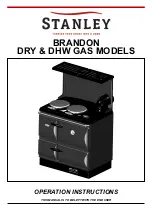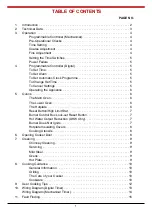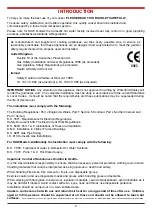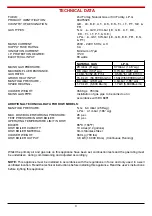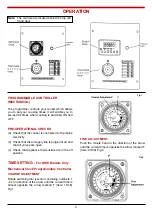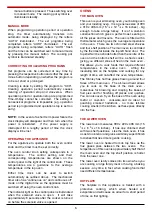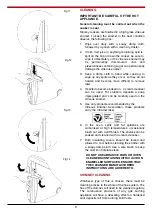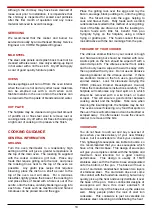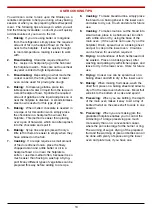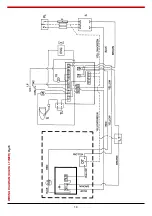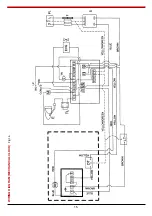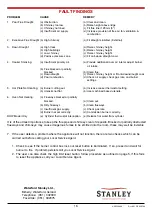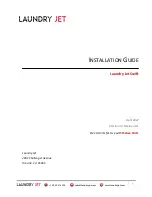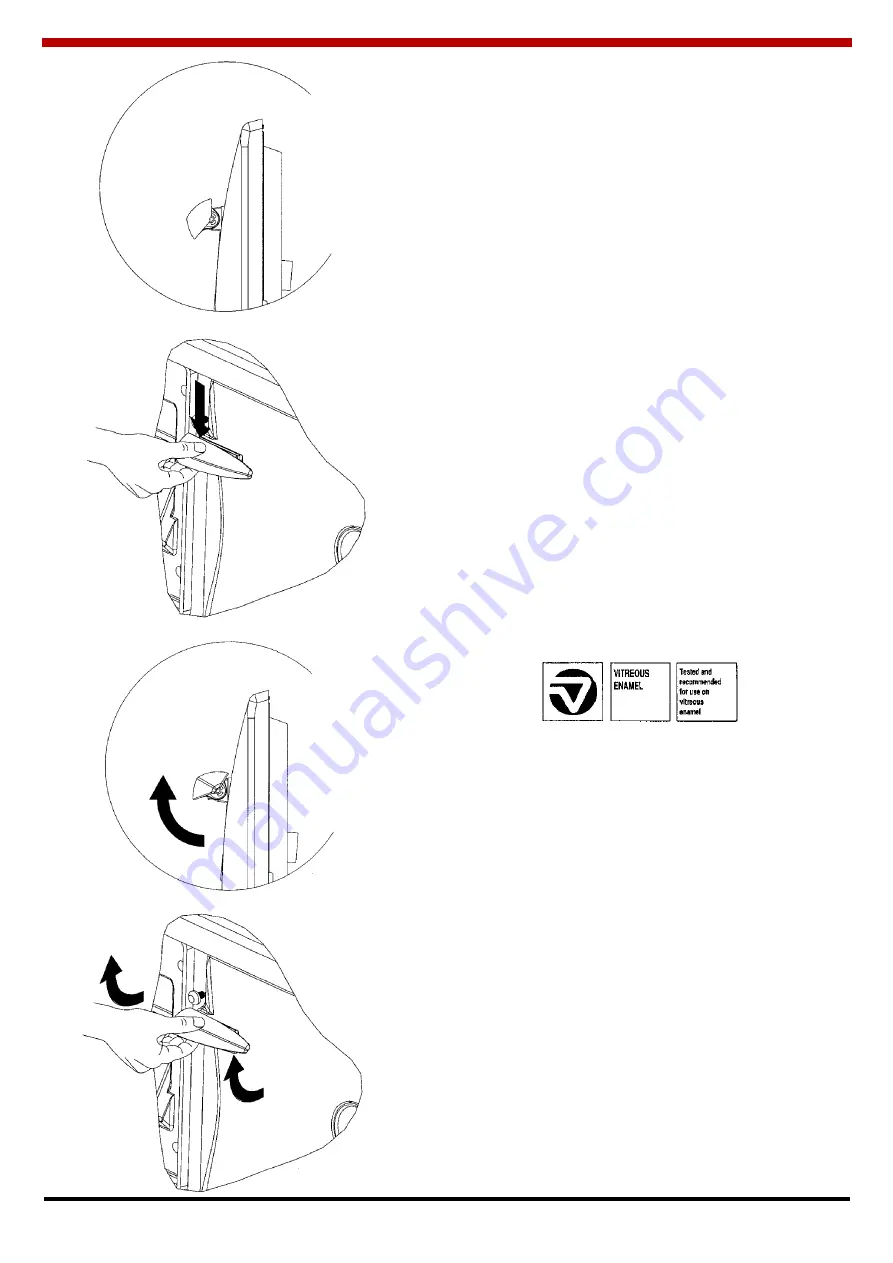
9
Fig.11
Fig.12
Fig.13
Fig.14
CLEANING
IMPORTANT: BE CAREFUL OF THE HOT
APPLIANCE.
General cleaning must be carried out when the
cooker is cool.
Stanley cookers are finished in a high gloss vitreous
enamel. To keep the enamel in the best condition
observe the following tips:
1.
Wipe over daily with a soapy damp cloth,
followed by a polish with a clean dry duster.
2.
If milk, fruit juice or anything containing acid is
spilt on the hob or down the cooker, be sure to
wipe it immediately or the vitreous enamel may
be permanently discoloured. Jam and
preservatives containing sugar can permanently
damage the vitreous enamel.
3.
Keep a damp cloth to hand while cooking, to
wipe up any spills as they occur, so they do not
harden and become more difficult to remove
later.
4.
If spills do become baked on, a cream cleanser
can be used. For stubborn deposits a soap
impregnated pad can be carefully used on the
vitreous enamel.
5.
Use only products recommended by the
Vitreous Enamel Association, these products
carry the Vitramel label.
6.
In the oven, spills and fat splashes are
carbonised at high temperatures: occasionally
brush out with a stiff brush. The shelves can be
soaked and cleaned with a cream cleanser.
7.
Both insulating covers should be raised and
allowed to cool before cleaning the enamel with
a soapy damp cloth. Use a wire brush to keep
the cast iron hotplate clean.
DO NOT USE ABRASIVE PADS OR OVEN
CLEANERS CONTAINING CITRIC ACID ON
ENAMELLED SURFACES. ENSURE THAT
THE CLEANSER MANUFACTURERS
INSTRUCTIONS ARE ADHERED TO.
CHIMNEY CLEANING
Whichever type of flue is chosen, there must be
cleaning access to the whole of the flue system. The
flue of the chimney will need to be cleaned regularly.
The combustion products of any gas burning
appliance will have a descaling effect on hardened
soot deposits left from burning solid fuels.
ASSOCIATION

